Several hours after heading south from Marree, I neared my destination for the next two nights: Kimba, "Halfway Across Australia". I had chosen Kimba due to its proximity to the Gawler Ranges, which seemed to have fine herping opportunities, and to Pinkawillinie Conservation Park, which featured thorny devils on its promotional materials and also had a particularly entertaining name. In case I had missed out on thorny devils in the Red Centre, this was to be my second chance.
On the way down I was planning to check out Lake Gilles Conservation Reserve because I had been told it had some beautiful Painted Dragons (Ctenophorus pictus) and Crested Dragons (Ctenophorus cristatus). As I approached the Lake Gilles turnoff from the main road, I spotted a welcome sight on the pavement.
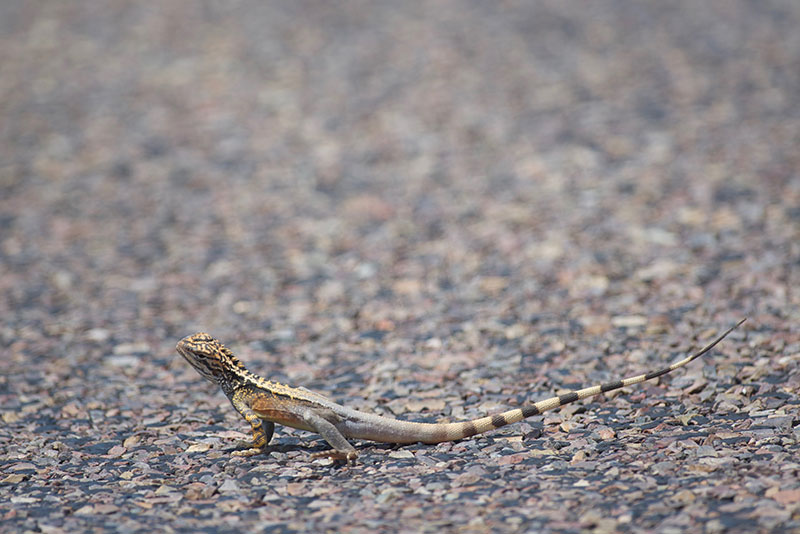
In the Lake Gilles Conservation Reserve proper, I found a few small, light-colored dragons, but damn they were fast. I didn't get any photos, or even any good looks. They must have been either Painted Dragons (Ctenophorus pictus) or some species of Earless Dragons (Tympanocryptis).
On the road into the reserve, however, I saw a much more cooperative lizard.
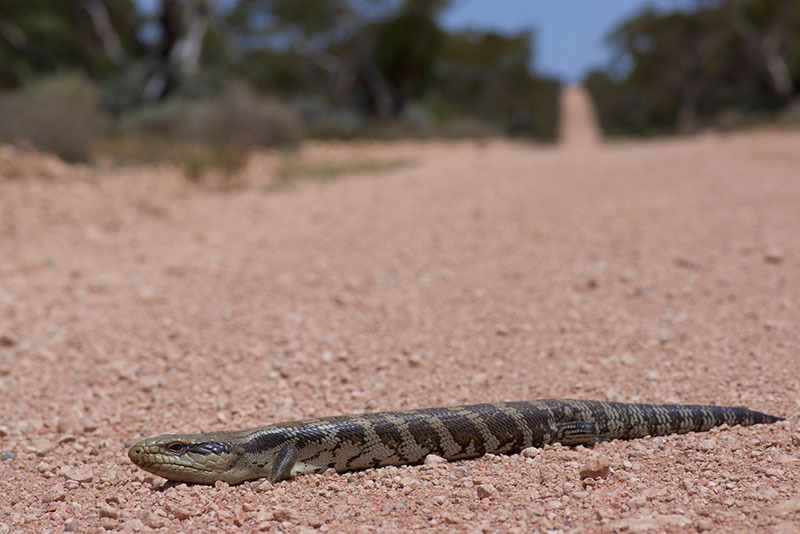
I arrived in Kimba in mid-afternoon and headed out to Pinkawillinie. Many by-now familiar faces plodded across the roads at various times.
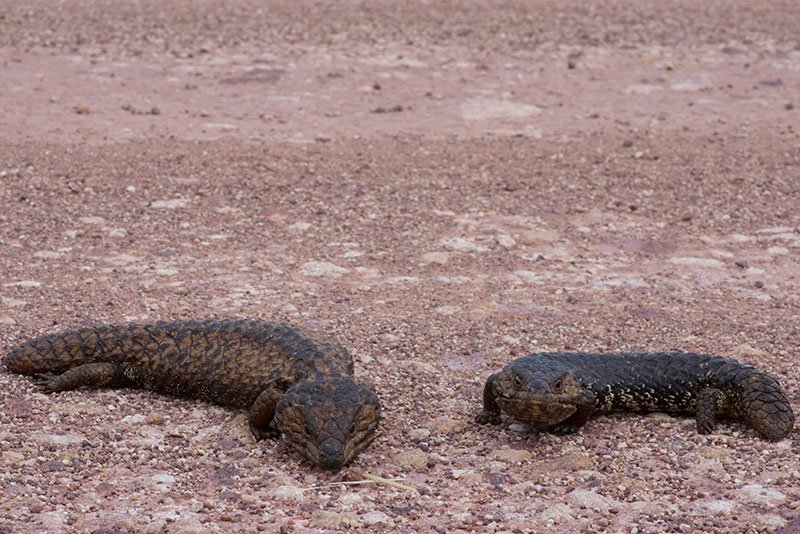
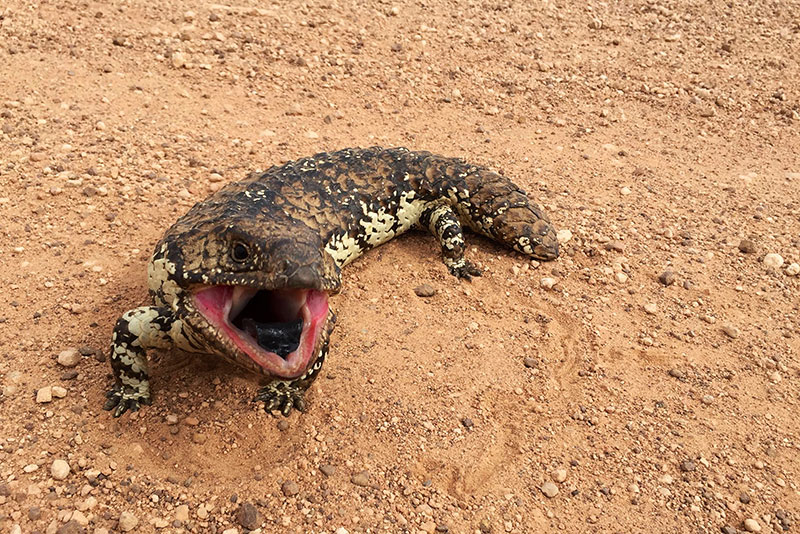
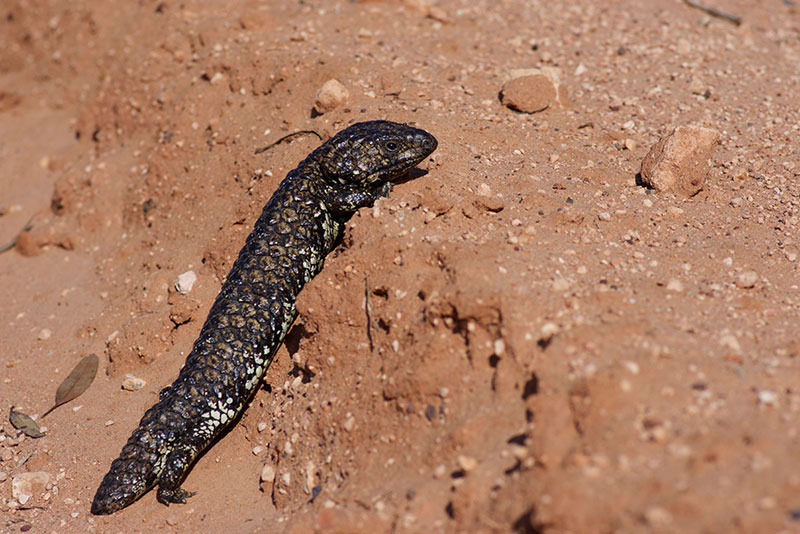
Eventually a non-lumpy herp appeared, and meandered off into the bush. It turned out to be a Dugite, another of your standard Australian big brownish highly venomous elapids.
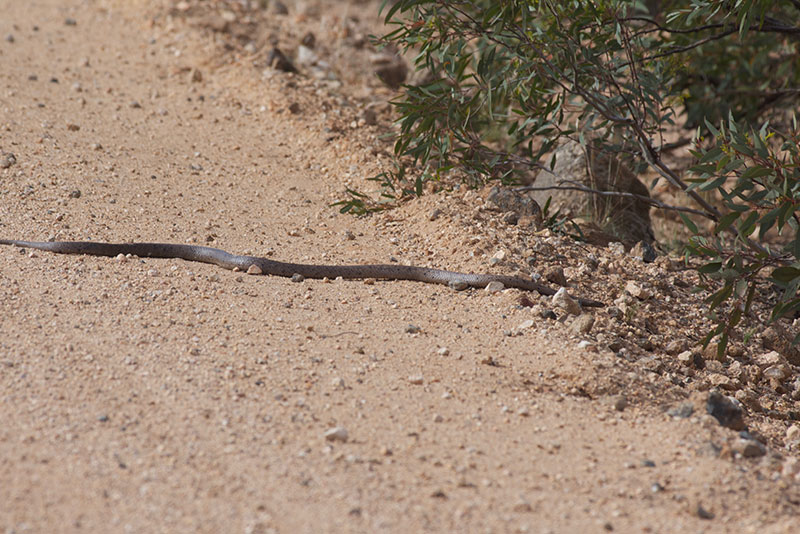
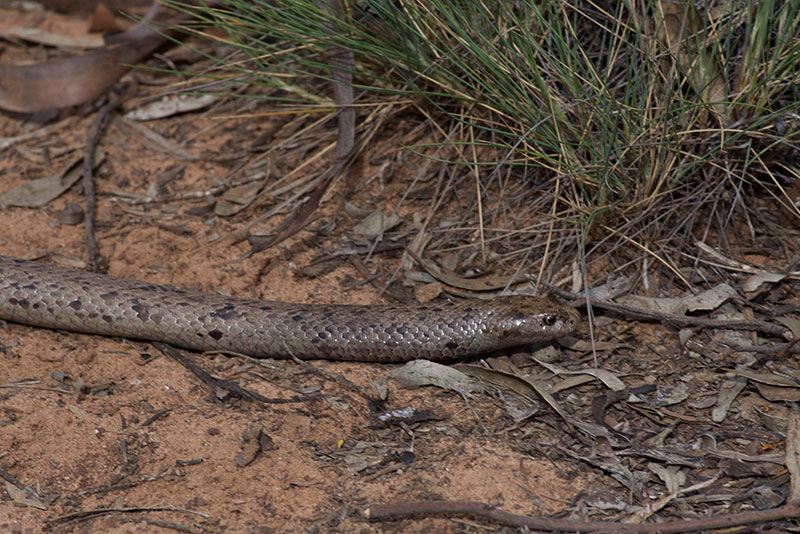
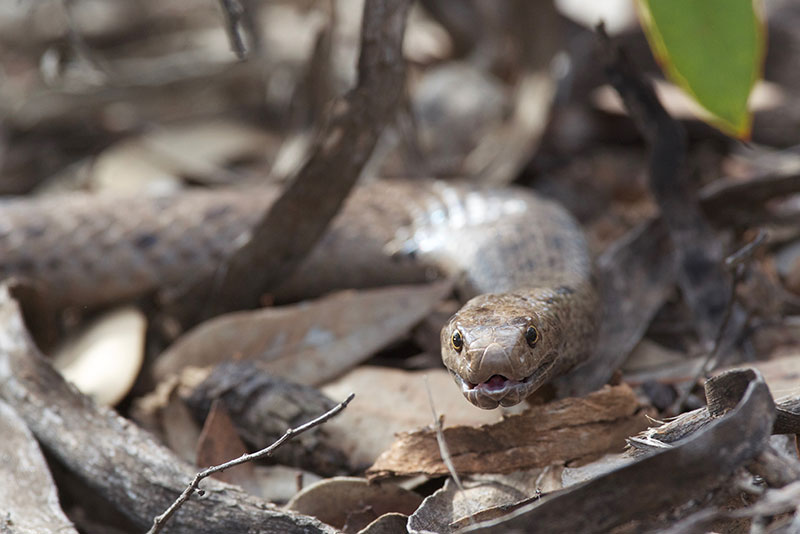
Ten minutes later, I was graced with the presence of the poster child itself, my third Thorny Devil of the trip, motionless in the middle of the dirt road. Ah, life is sweet!
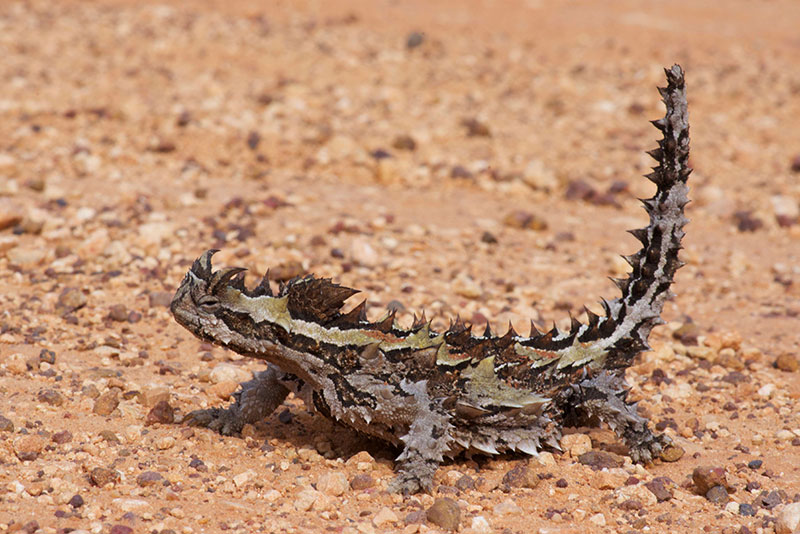
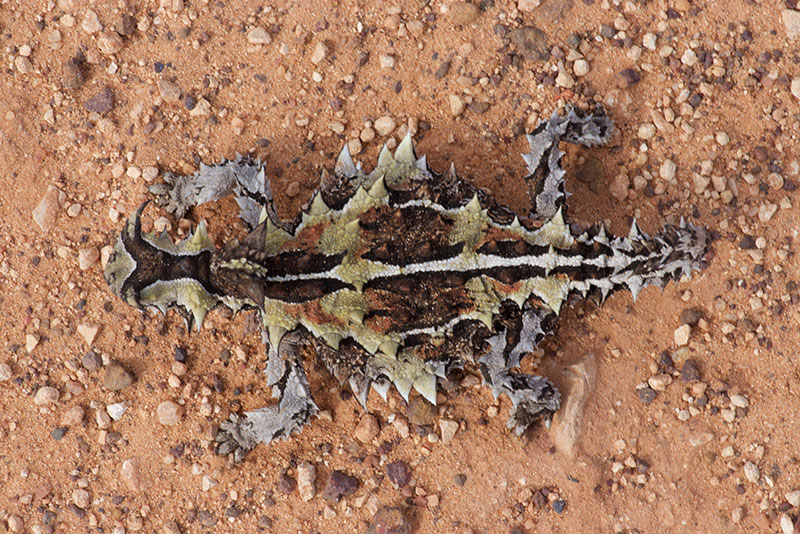
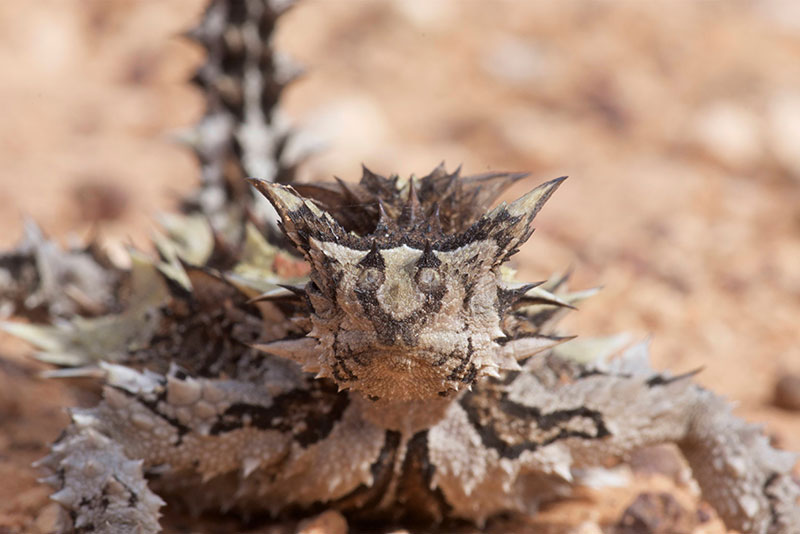
Shortly after my Thorny Devil experience, I stopped for yet another Shingleback and discovered that the back right tire on my rental 4WD was flat. Dusk was approaching, and I hadn't seen any other people or vehicles for a couple of hours, and the lug nuts on the tire proved so difficult to remove that at one point I thought I would have to give up, but I'm pretty sure I had a ridiculous grin across my face the whole time. Obviously nothing serious could go wrong to someone who had just seen their third Thorny Devil!
Soon enough, the spare tire was in place and I headed back to Kimba. As a final touch on a fine afternoon, yet another species of big brown elapid put in an appearance on the road.
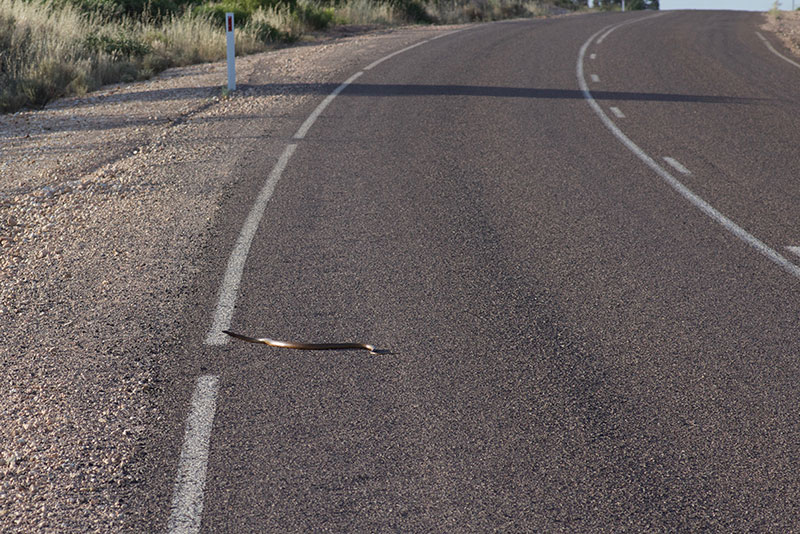
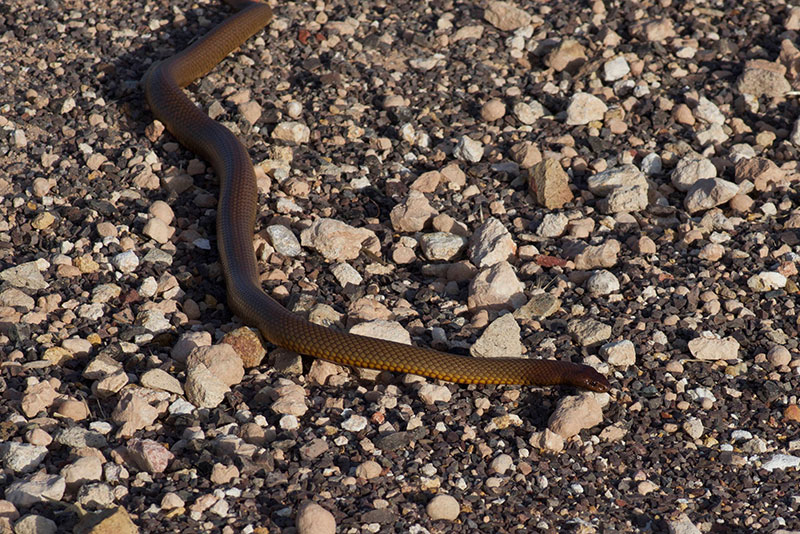
The next morning I got off to a late start because I wanted to get the flat tire repaired before further adventuring. Fortunately, it seems that one thing all tiny outback towns have in common is good tire service places, and I had the puncture fixed by a friendly mom-and-pop shop before 9AM. The morning was quite cold, so I'm sure I didn't miss any early herp activity.
My destination for the day was Gawler Ranges National Park, about two hours drive from Kimba, mostly on unsealed roads. The park was not teeming with visitors; I think I passed one other tourist car all day, and saw nobody else on foot. I first stopped at a pay station where I picked up a map, and where a friendly park service employee who happened to be passing through gave me advice on good spots to look for reptiles. That encapsulates two things I love about Australia: (1) almost everyone you meet is friendly, and (2) park service employees know good spots to look for reptiles.
Along the side of the road I'd periodically pass kangaroos. This apparent nuclear roo family featured the beefiest Red Kangaroo that I saw on my whole trip.
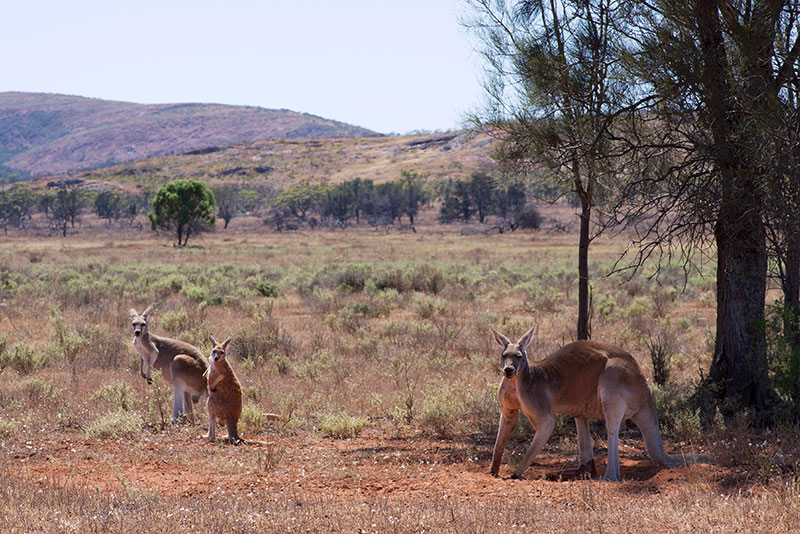
Near the parking area for my first recommended hiking spot was a huge troop of cacophonously squawking Pink Cockatoos, a.k.a. Galahs. They are extremely common in the outback, but for those of us who live in parrot-free zones they are a marvelous sight to see (and hear).
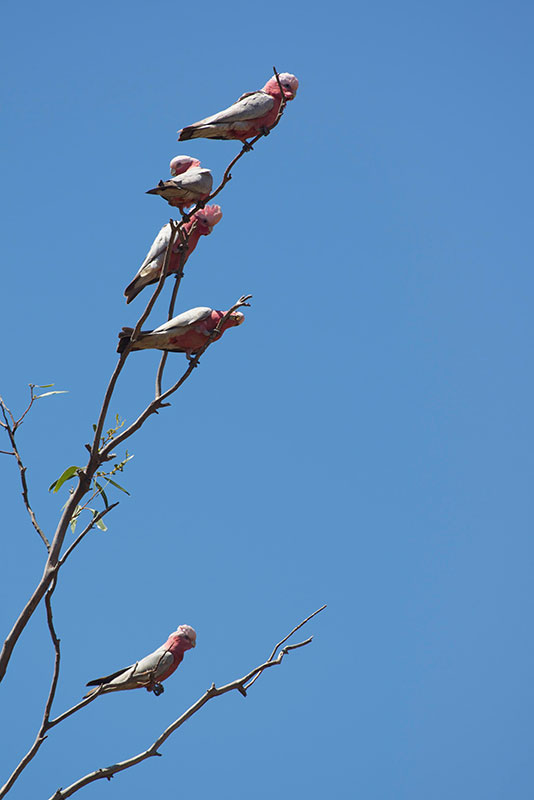
Here's the promising view in front of me on the hike:
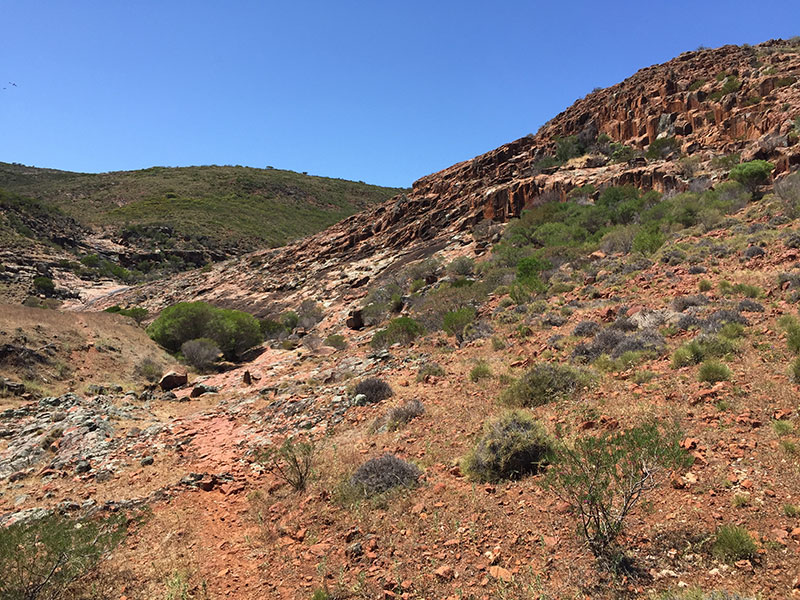
The first lizard I came across was another of my Shingleback buddies.
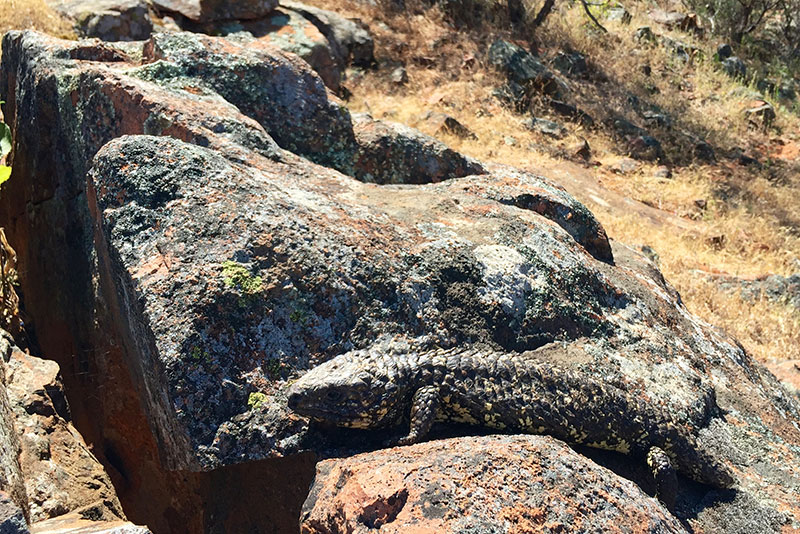
Noon approached, but it had been such a cool morning that the lizards were only now starting to emerge and bask on the rocks. I spotted a few more Tree Skinks, but didn't expend much energy trying to photograph them since I had seen so many earlier on the trip and gotten good photos then.
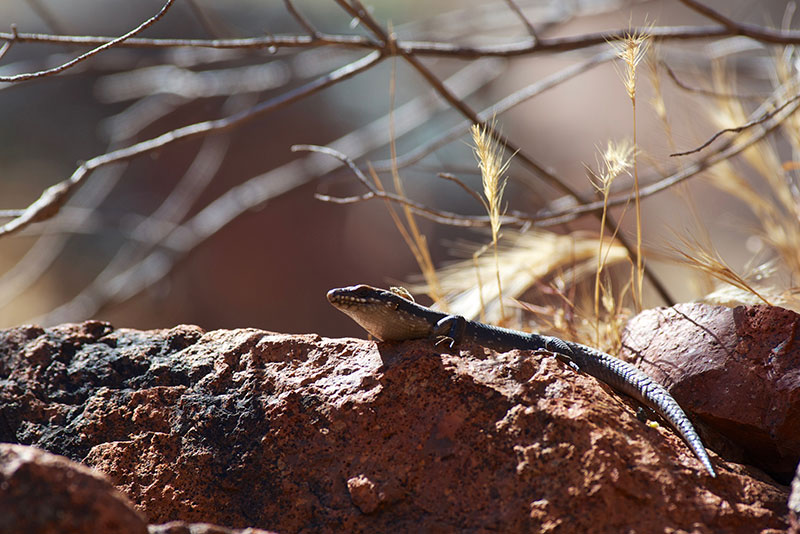
A small apparently-permanent waterhole housed a busy population of tadpoles. Less than a handful of frog species are known from Gawler Ranges, but I have failed to identify these tadpoles so far.
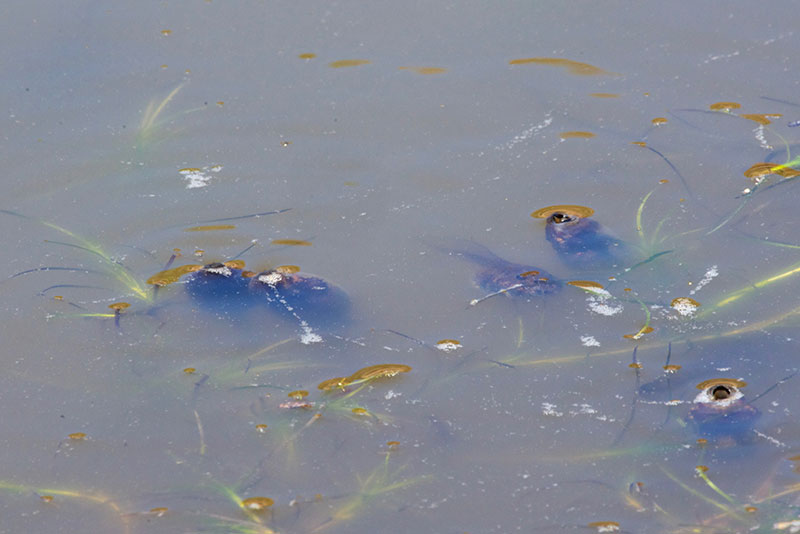
Back on the rocks, mixed in with the numerous Tree Skinks, lurked a few Gidgee Skinks. This is another medium-sized ("huge" in American) communal rock skink. I saw four or five of them, all very shy.
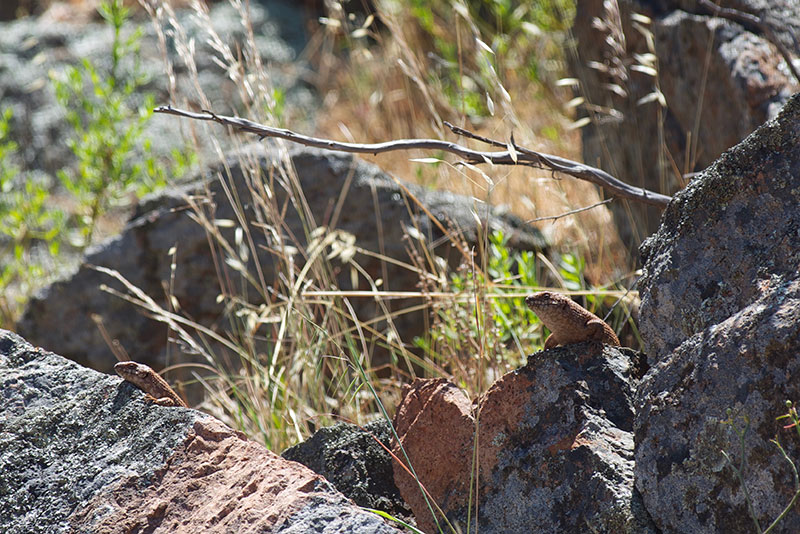
I managed to get one close-up of a Gidgee Skink before it vanished into a crevice and plugged the crack with its spiky tail, as this species is wont to do.
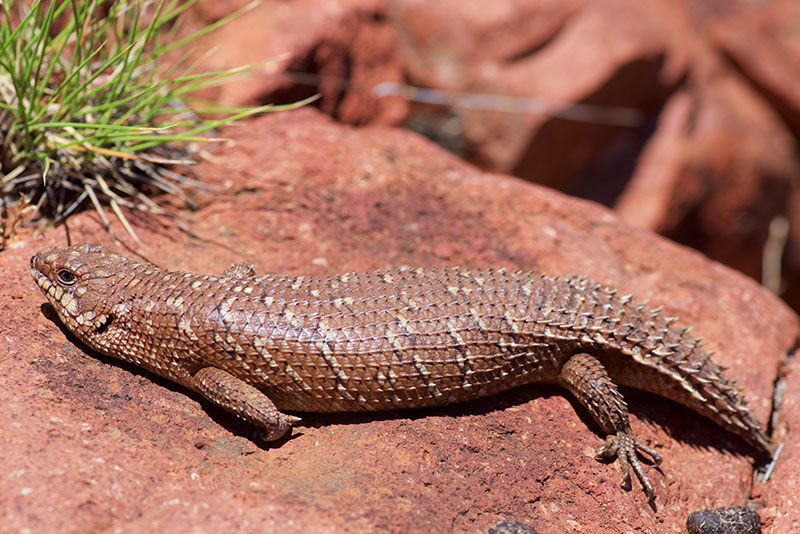
As the day gradually warmed, Peninsula Dragons started to appear. The first one I saw was an apparently gravid female, in the relatively dull pattern and color typical of the fairer sex.
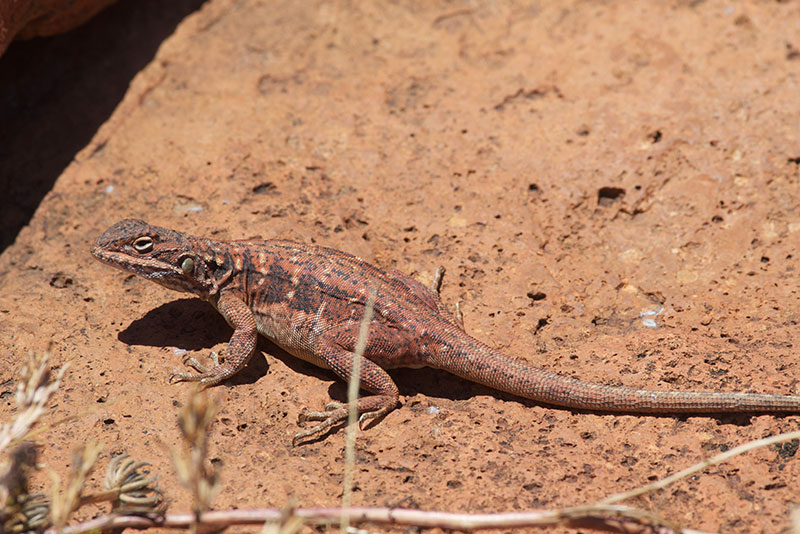
Shortly thereafter, male dragons started popping up all over the place.
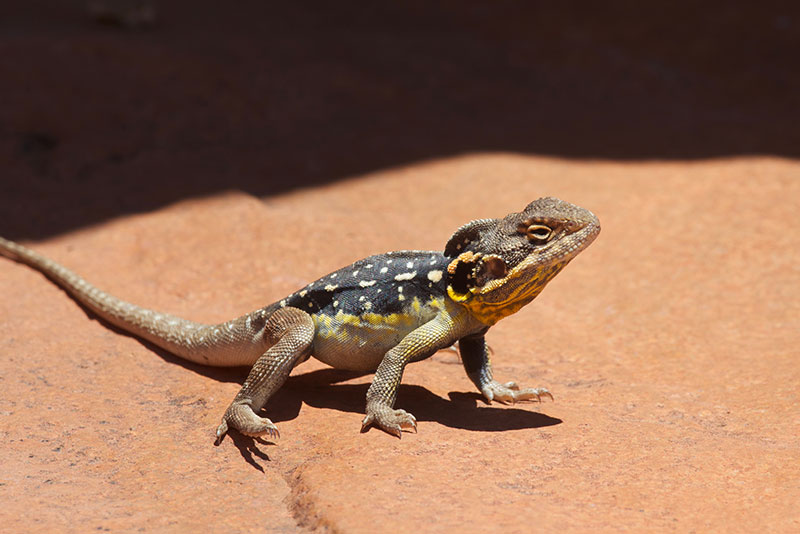
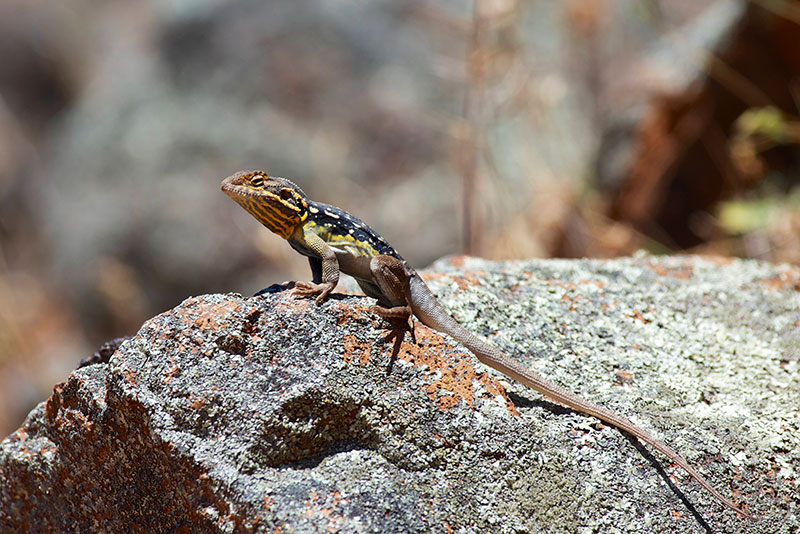
While I was trying to focus my 100mm lens on a male dragon a few feet away, another male popped up and started chasing the first one. They scampered all around the rock, at one point chasing each other between my legs. The 100mm lens was too long to capture both animals at once, and swapping lenses would obviously spook them, so I pulled out my iPhone and got a photo that way.
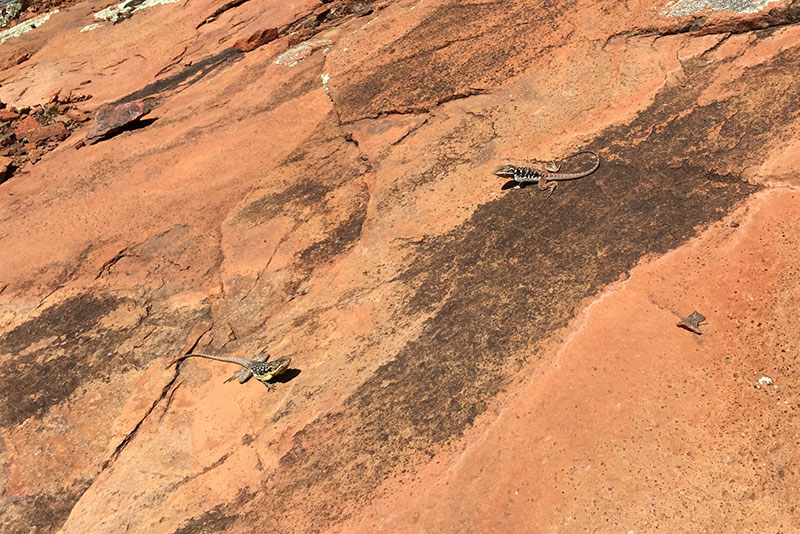
If you do not understand this joke, I feel sorry for you.
Later in the afternoon I encountered a Crested Dragon splayed out on the road. You could imagine from its strong back legs and long tail that it is an excellent runner, and you would be right.
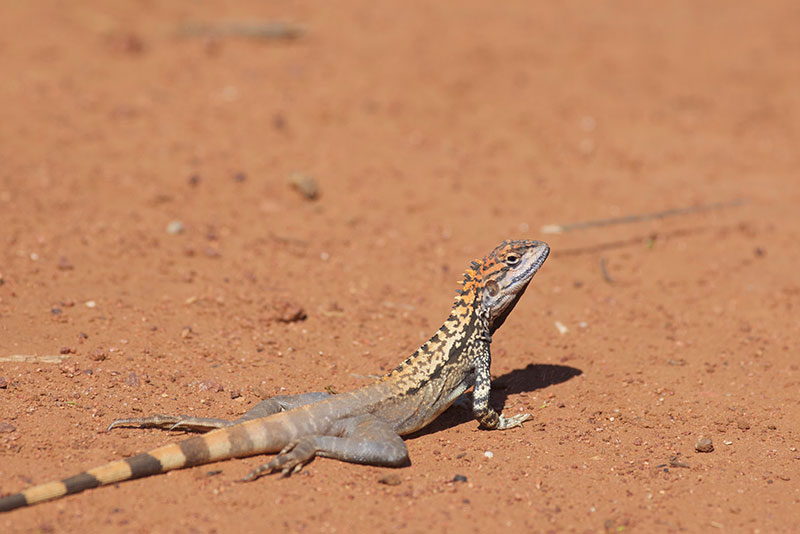
I'll throw in another Crested Dragon here, though it is somewhat out of place. I saw this one a few days later south of Kimba while driving from the southern Eyre Peninsula back north on my way to Adelaide.
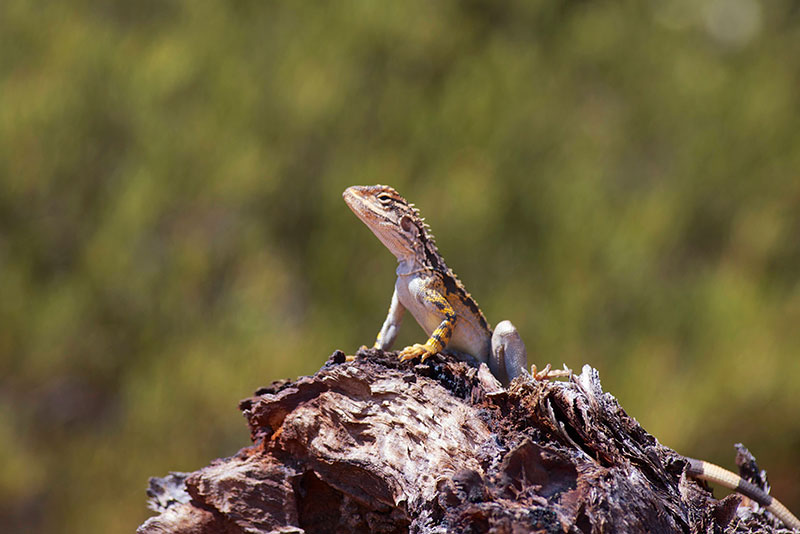
My final stop at Gawler Ranges National Park was the popular Organ Pipes formation. Note that I call it popular based on comments elsewhere, as I was the only person for miles around when I visited.
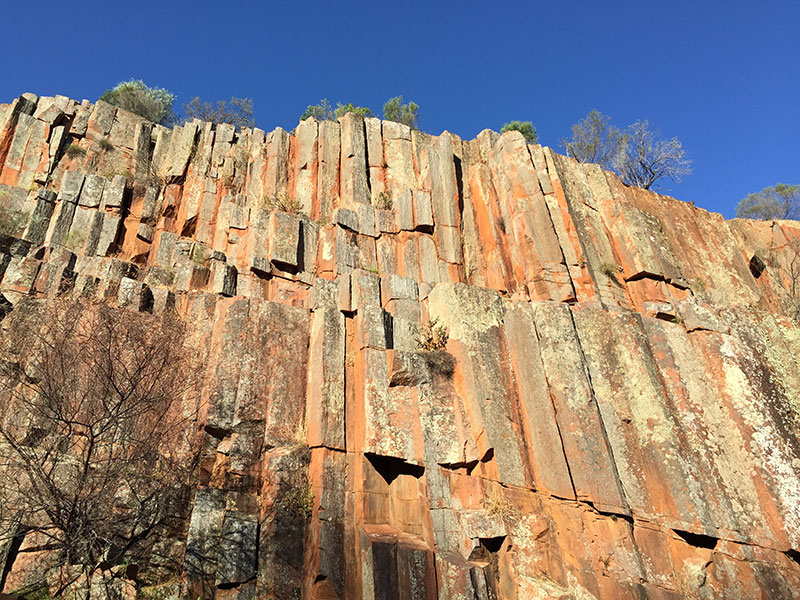
By the time I reached Organ Pipes it was late in the afternoon and the temperature was dropping. I didn't expect to see any herps but one female Peninsula Dragon was still out.
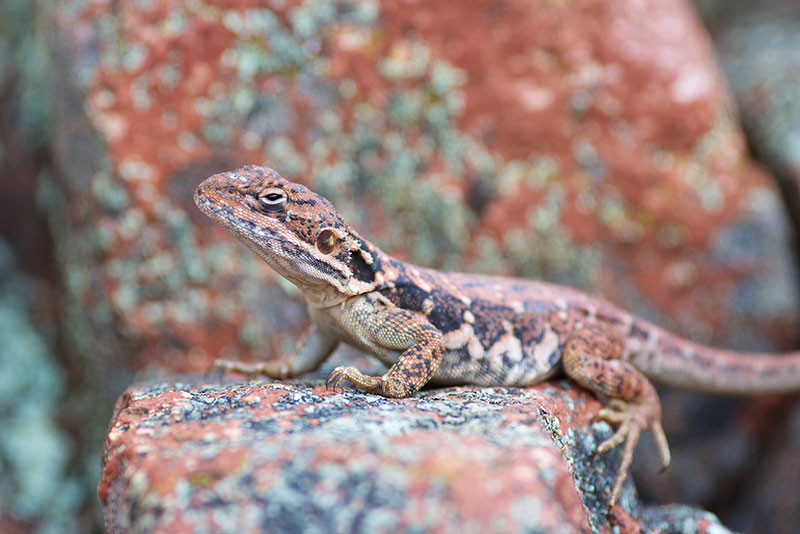
The drive back to Kimba featured one unidentified snake and many, many kangaroos.
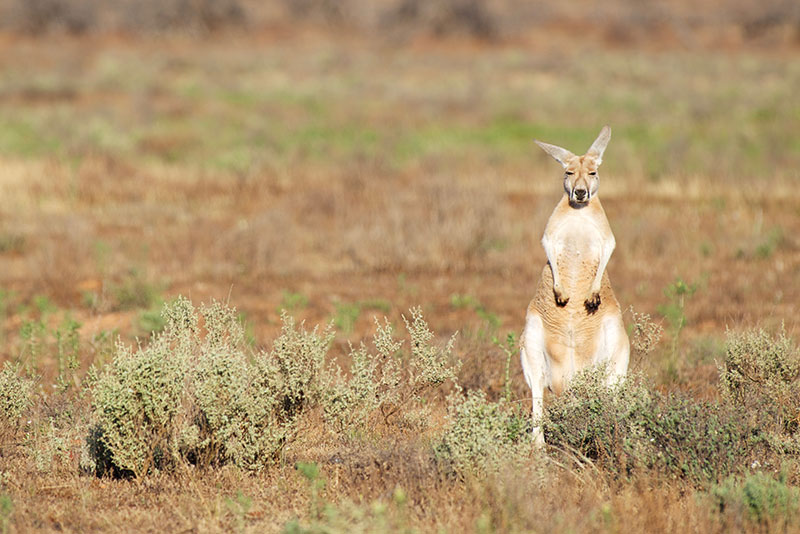
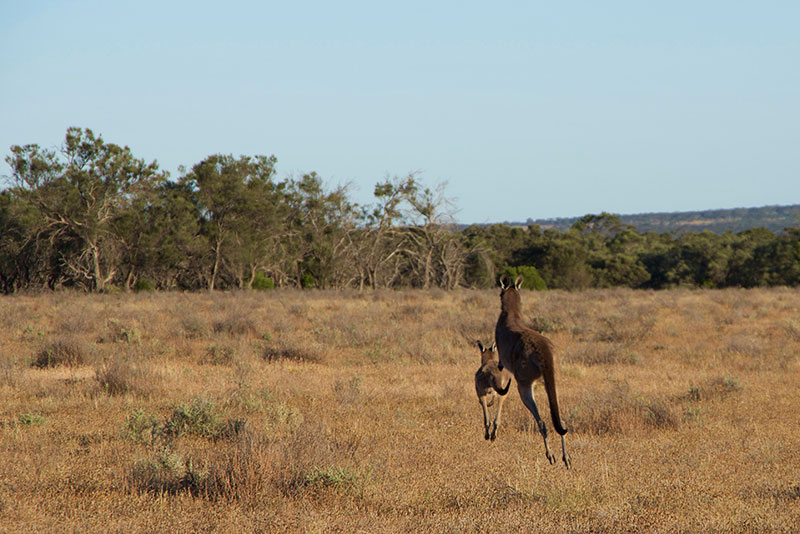
When I was in Kimba the nights were too cold for herps. I did spot my second lifetime monotreme (another Echidna) bobbling across the road one night, but that was it for nocturnal wildlife in this area.
Next: Southern Eyre Peninsula